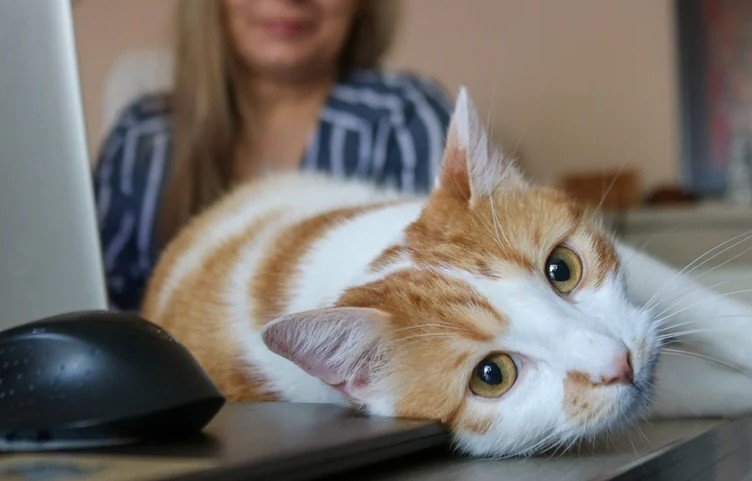The bird flu isn’t just a poultry or dairy cow problem anymore. Pet cats are getting sick, and the concern now is: what happens if they pass it on to us?
A prominent virologist at Emory University says H5N1 — the strain of avian influenza currently spreading in U.S. animal populations — is showing up in unexpected places. That includes domestic cats. With neurological symptoms and fatal outcomes in many of these feline infections, the threat is becoming more real. And more unsettling.
Cancellations, Cows, and Contagion: Why the Timing Matters
Just as the outbreak keeps expanding, the federal government pulled the plug on a vaccine development contract with Moderna.
That decision caught scientists off guard.
Seema Lakdawala, an Emory virologist who specializes in influenza transmission, says vaccine work is exactly what’s needed — not just for humans, but for animals too. “We should be thinking about all sorts of vaccine modalities,” she said in a recent interview. “To protect our cows, our dairy farmers, our poultry workers, veterinarians, chickens — and yes, our cats.”
Federal data shows the current H5N1 strain has been detected in migratory birds, chickens, and cows, including dairy herds across multiple states. It was also found in several cats — both domestic and exotic. In sanctuaries, big cats contracted the virus from eating infected raw meat. In homes, it’s still unclear how domestic cats are picking it up — but the signs are deeply concerning.

The Feline Factor: Why Cats Are Suddenly on the Radar
This isn’t some isolated case of one sick kitten.
Cats, it turns out, are especially vulnerable to H5N1. They present with severe neurological symptoms and often don’t survive. It’s not just respiratory illness anymore — there’s brain inflammation, seizures, disorientation. And many of these cats were kept indoors or had limited outdoor exposure.
Lakdawala and other researchers are trying to determine whether cats are catching it from contaminated meat, infected birds, or other animals. But the biggest worry? Transmission to humans.
It’s not theoretical. In rare cases, H5N1 has jumped species before. The concern now is that cats could become a bridge — from livestock or birds, straight to people.
Spread in Numbers: Where the Virus Has Been and What’s Next
So far, confirmed Georgia cases were last reported in January in backyard and commercial poultry. But that doesn’t mean the virus is gone. Experts say H5N1 keeps popping up in different regions — a persistent, stealthy spread.
Here’s a quick look at the states and species affected by H5N1 in 2025 (based on CDC and USDA reporting):
| Species Affected | States with Confirmed Cases | Month of Most Recent Report |
|---|---|---|
| Dairy Cows | Texas, Michigan, Idaho | May 2025 |
| Chickens (Commercial) | Georgia, Iowa, Minnesota | January – April 2025 |
| Backyard Poultry | Georgia, Ohio, Wisconsin | January – March 2025 |
| Cats (Domestic & Wild) | Texas, Colorado, Florida | March – May 2025 |
With migratory birds preparing to move south again this fall, scientists say more outbreaks are inevitable.
Pets, People, and Prevention: What Experts Recommend Now
So what does this mean for pet owners?
Lakdawala says it’s not time to panic — but people should stay aware. Especially cat owners. Simple things help: keep cats indoors, avoid feeding raw meat, and watch for odd symptoms like wobbling, seizures, or sudden behavioral changes.
She emphasized the importance of a layered public health response, one that doesn’t just focus on human vaccines but also considers animal transmission paths. Because as she put it, “Protecting animals is ultimately about protecting people.”
Here’s what pet owners and local vets should keep in mind right now:
-
Don’t feed cats raw or undercooked meat — especially poultry or organ meat.
-
If your cat hunts birds or rodents, keep them inside until the risk declines.
-
Watch for symptoms: neurological changes, trouble walking, confusion, seizures.
-
Call a vet immediately if symptoms appear — and mention H5N1 concerns.
It’s also vital that surveillance expands. Many of the feline cases were only detected because researchers were testing broadly. Without that, we’d have no idea this was even happening.
A Troubling Decision: Ending the mRNA Vaccine Contract
The federal government’s decision to terminate its contract with Moderna to develop an mRNA vaccine for bird flu comes at a time when scientists say every tool is needed.
Lakdawala didn’t mince words. “There are new herds and new outbreaks happening constantly,” she said. “We are not past the danger zone.”
She argues the U.S. needs a flexible, rapid-response vaccine platform — not just for humans, but for potential animal hosts too. mRNA technology could’ve played that role.
Instead, the decision leaves the country flat-footed.
With flu season only months away, and migratory birds moving again in the fall, the clock is ticking.
Looking Ahead: The Unknowns Are Still the Scariest Part
Much about this strain of bird flu is still a mystery. Why are cats getting so sick? Could they spread it directly to humans? And how many cases are slipping by unnoticed?
One sentence: We don’t know.
What’s clear is that H5N1 isn’t going away. And if cats become a conduit for the virus, we may be facing a far more complex public health puzzle than previously imagined.
The hope is that with more research, broader testing, and smarter surveillance, scientists can stay one step ahead. But they’ll need support — funding, attention, and yes, vaccine development.
Without that, we may be chasing the virus instead of containing it.
